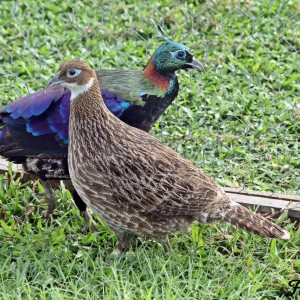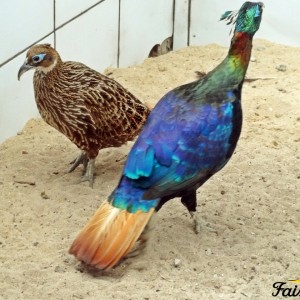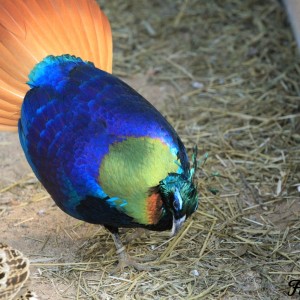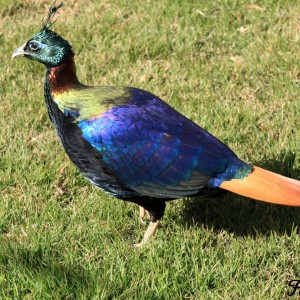| Nome Comum |
Himalayan Monal |
| Nome Científico |
Lophophorus Impejanus |
| Descrição |
It is a relatively large pheasant. The adult male has multi-colored plumage everywhere, while the female, as in other pheasants, is dull in color. Notable features on the male include a long ridge, metallic green, copper-colored feathers on the back and neck, and a prominent white back that is most visible when the bird is in flight. The tail feathers of the males are uniformly reddish, becoming darker to the tips, while underneath the tail of the females are white, barred with black and red. The female has a prominent white spot on the throat and a white stripe on the tail.
|
| Tamanho |
Males and females 63 to 72 cm. |
| Peso |
Males 2.38 kg and females 2,15 kg. |
| Reprodução na Natureza |
Lays 3 to 5 eggs that are incubated for a period of 27 days. |
| Reprodução em Cativeiro |
Lays 8 to 22 eggs that are incubated for a period of 27 days. |
| Localização |
It is a national bird of Nepal, where it is known as Danphe, is also a symbol of the states of Uttarakhand and Himachal Pradesh in India where it is known as Monal. Its natural range extends from eastern Afghanistan through the Himalayas in Pakistan, the Kashmir region and the Republic of India (Himachalradesh, Uttarakhand, Sikkim and Arunachal Pradesh states), Nepal, southern Tibet and Bhutan. There is also an account of its occurrence in Burma.
|





WE DO NOT WORK WITH SALES OF EGGS

vapor






